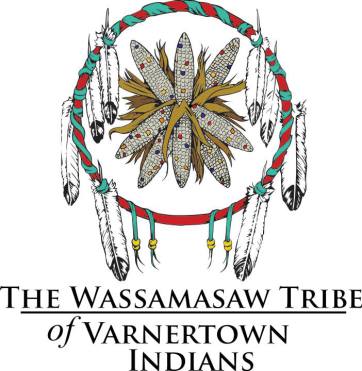8 Native Family Bloodlines
This tribal community has (8) documented native lineal bloodlines, and these family lines are represented in many ways. For example, the tribal seal contains 8 ears of Indian corn , 8 eagle feathers, and 8 ribbons to represent the 8 ancestral bloodlines. The original lineal lines are Broad, Burbage, Clark, Dangerfield, Driggers, Huff, Varner and Williams.
This is only the start of DOCUMENTED bloodlines – Not the start of the actual Native Bloodline
Although our Settlement Community has been in existence well before the late 1700s –
most of the “DOCUMENTED” bloodlines only start to be seen in records when white men began to either marry into the Indian Community or have children with Native women in the community.
Patterns are affidavits of native parentage (Clarks/Williams/Dangerfield/Huff/Burbage/Driggers) or the Wills of plantation owners who had children with their Indian Slaves (Varner/Broad).
Clark Line: William Clark
William Clark is documented within the community in 1773. On March 3, 1807, John Gough swore an affidavit that William Clark and his 2 siblings descended from “a Native-American woman of the Catawba Nation” and was born in the St. James, Goose Creek Parish. His son was Joseph Clark (b. 1779). The Clark documented bloodline starts with this progenitor and ties to a Catawba family within the settlement community.
Williams Line: Hanah Williams
The Progenitor of the Williams Line is Hanah William (b mid-1700s). She and her sister Bathsheba were of Native American Etiwan descent. Hanah Williams was the grandmother of William Williams.
William fathered Mary Williams who married William Varner.
Driggers Line: Elizabeth Driggers
There are several documented sources showing Elizabeth “Skatchwa” Driggers, wife of Moses
Driggers, a free Indian of Cherokee Native American Ancestry. She helped to establish one of the Indian Schools in the Community, the St. Barnabas Mission in 1883.
Dangerfield Line: Hannah Edings
William Elliot Edings had a daughter with “Indian Mary” an Edisto Indian. That daughter, Hannah Edings (b. late 1700s d. 1857) married John R Dangerfield, the son of William Dangerfield who came to SC in the American Revolutionary War. Their 4 sons were John, Morton, William, and James.
Broad Line: Daphne Broad
George Broad was a German immigrant who settled in the area in the late 1700s and owned a plantation next to Bamberetta, which was the plantation owned by John Dangerfield (see Dangerfield Native Line).
George fell in love with an Indian Slave named Daphne and had several children with her: Nicholas, Mary, Jacob, Betsey, Sammy, William, Sarah, Frederick, James, George, and Simeon.
In his will, George knew he could not legally leave his land to Daphne and children, so he entrusted his neighbor, John Dangerfield to look after his estate and take care of his family. John Dangerfield kept to his promise, but after his death, his children pushed to ship off his family to take the land.
Burbage Line: John Burbage
John Burbage (1780-1850) was the son of Thomas Burbage and Elizabeth Platt, a Santee Indian. John had a son named Thomas Burbage who married Mary Ann Broad (see Broad Line)
Varner Line: Rose Varner
Rose Varner (1822 -1900) is the progenitor of the Varner Line. She was a native slave on the Varner Plantation. Although she had several children [Jane, David, Margaret, William, Hannah, Eliza, Lavenia, and Marion], her sons William Varner (1847-1927) and Marion Varner moved into the Settlement Community. Rose lived with Marion in the community until her death. William married Mary Williams of the Williams Native Line and their 9 children and numerous grandchildren make up many of the families living in the community today.
Huff Line: William Huff
William Huff (1823-1855), James Huff, and Daniel Huff were the first Huffs of documented Indian descent. They were the sons of John Huff and Elizabeth Burbage. The Huffs married into both the Burbage and Driggers Lines, and then later married into the Varner and Clark Lines.
KINSHIP TO OTHER RECOGNIZED NATIVE TRIBES
Although our Settlement Tribe is made up of several different native progenitors, and our core community in place since the 1700s, our distinction as a Native Community has remained in place since we have continued to forge Kinship Ties with other Tribes, especially our sister Tribes of the area, Edisto and Santee. Many of our family have ties to several different Tribes and Native Ancestry.






